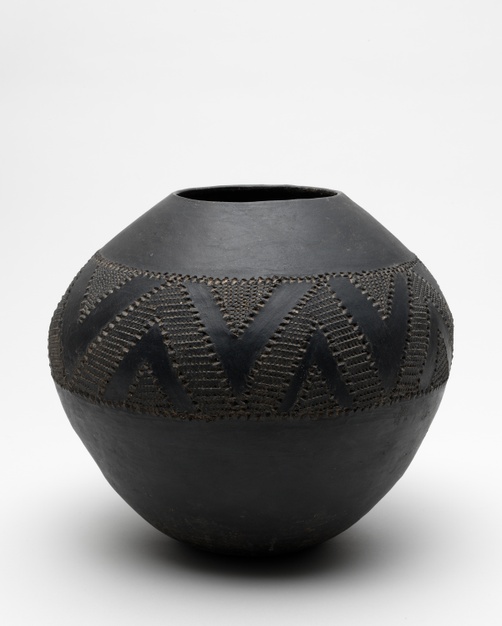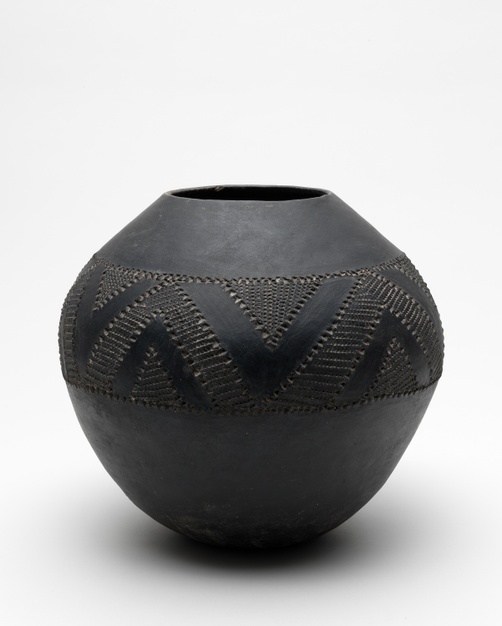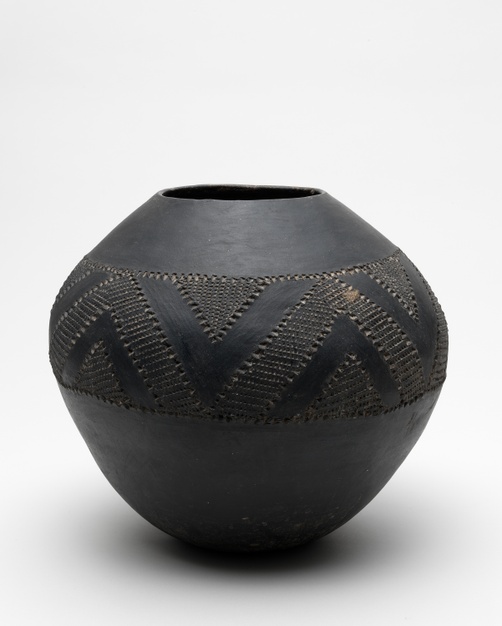







Object Labels
From the exhibition: African Pots and Gender (November 14, 2009 – January 3, 2010)
Many African cultures view pots as metaphors for the female figure, with such words as shoulder, lip, mouth, belly, and foot used to refer to distinct parts of the vessels. Particular emphasis on the female body is seen in these two pots, Zulu beer pot from South Africa and the Nigerian vessel from the Benue Valley area. Inherent within the relationship between the female form and the ceramic vessel are concepts of prosperity and wealth, and social and spiritual propagation. When one then considers the intended functions and original contexts of these pots, the vessels are transformed from utilitarian objects into objects symbolizing the people’s deepest cultural beliefs.
The Zulu beer pot features a chevron design repeated four times around the fullest part, or belly, of the pot. This design is commonly found on aprons worn by pregnant Zulu women, where it is identified as the amasumpa “herd of cattle” motif. The markings of the Zulu beer pot thus draw upon the procreative powers associated with women to reinforce the want of a plentiful yield of a nice beer. The Zulu regard the quality and quantity of beer as an indicator of status and wealth, and beer pots such as this one are essential in weddings, funerals, birth ceremonies, ancestral rituals and offerings.
–Tricia Desmarais ‘02
From the exhibition: Africa Embodied:
The Language of Adornment (November 29 – December 21, 2001)

